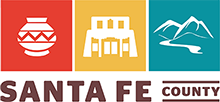News and Articles
05/07/2014
Santa Fe Regional Emergency Communication Center Helps All Residents Utilize Drug Tip Hotline
Santa Fe Regional Emergency Communication Center Helps All Residents Utilize Drug Tip Hotline
Santa Fe, NM - May 7, 2014– The Santa Fe Regional Emergency Communication Center (RECC) wants residents to know the Drug Tip Hotline in anonymous and is available to anyone who lives in Santa Fe County. The RECC worked with the Santa Fe County Sheriff’s Office to assign calls that come in on the tip hotline, but are outside of City limits. Now when dispatchers receive a call at the RECC on the drug tip hotline, they are directed to the appropriate authority. When calls are received for incidents outside of City limits a Sheriff’s Officer will be dispatched to the reported location or forwarded to the Sheriff’s Office investigations unit.
The RECC would like to remind residents that all callers utilizing the drug tip hotline remain anonymous, but will be asked to provide as much detail as possible regarding the incident they are reporting.
“At the Regional Center we receive calls for all of Santa Fe County and it was important to work will all jurisdictions so that regardless of where in Santa Fe County you are located, you can report drug activity,” said Ken Martinez, Santa Fe County Regional Emergency Communications Director.
The tip hotline was launched last month by the Santa Fe City Council, Santa Fe Police Department and the Santa Fe Regional Emergency Communication Center. The tip hotline was established to help curb illegal drug trafficking, combat drug related crimes and prevent further destruction suffered by families due to drug addictions, according to a City press release. In the City press release, they also included the list below as examples of possible drug activity in your neighborhood.
Signs of Drug Activity in your neighborhood:
- Unusual amount of people coming and going from the residence, many times at odd hours of the day or night.
- People waiting in vehicles outside the residence.
- People parking around the corner or down the street and approaching the residence on foot.
- People who visit the residence often and only stay for 15 minutes or less.
- Windows are blocked out, preventing neighbors from seeing inside.
- Finding drugs or drug paraphernalia (syringes, pipes, baggies, etc.) in the area.
- Noxious odors coming from around houses or buildings, such as musty or chemical smells.
- Houses or buildings where extreme security measures seem to have been taken.
